There can be your advertisement
300x150
How to Decorate an Interior in Mid-Century Modern Style
We explain what makes this style so attractive
The mid-century modern style emerged in America in the middle of the 1940s: the war was over, and people wanted comfortable furniture and democratic and life-affirming interiors. The name of this style was coined by American journalist Cara Greenberg in the 1980s and she described it in her book "Mid-century Modern: Furniture of the 1950s".
Today, mid-century modern (as this style is sometimes called in our country) is once again trendy, largely thanks to the incredibly popular Western TV series "Mad Men," where special attention was given to 1960s American interiors. What makes mid-century modern unique and how to decorate an interior in this style yourself — let's find out today.
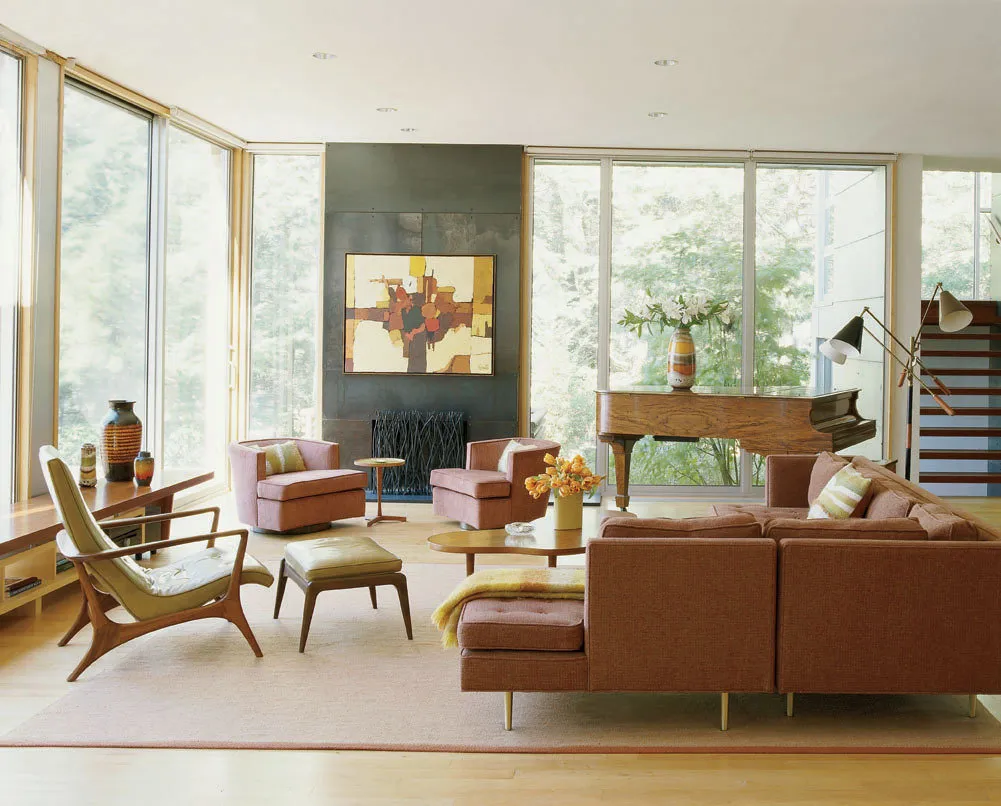 DNA of the Style
DNA of the StyleWhen and where it appeared: USA, 50–60s
The basis of the style: simple forms, smooth lines, dark wood, muted palette, geometric patterns
Famous names: Charles and Ray Eames, Harry Bertoia, Eero Saarinen, Arne Jacobsen
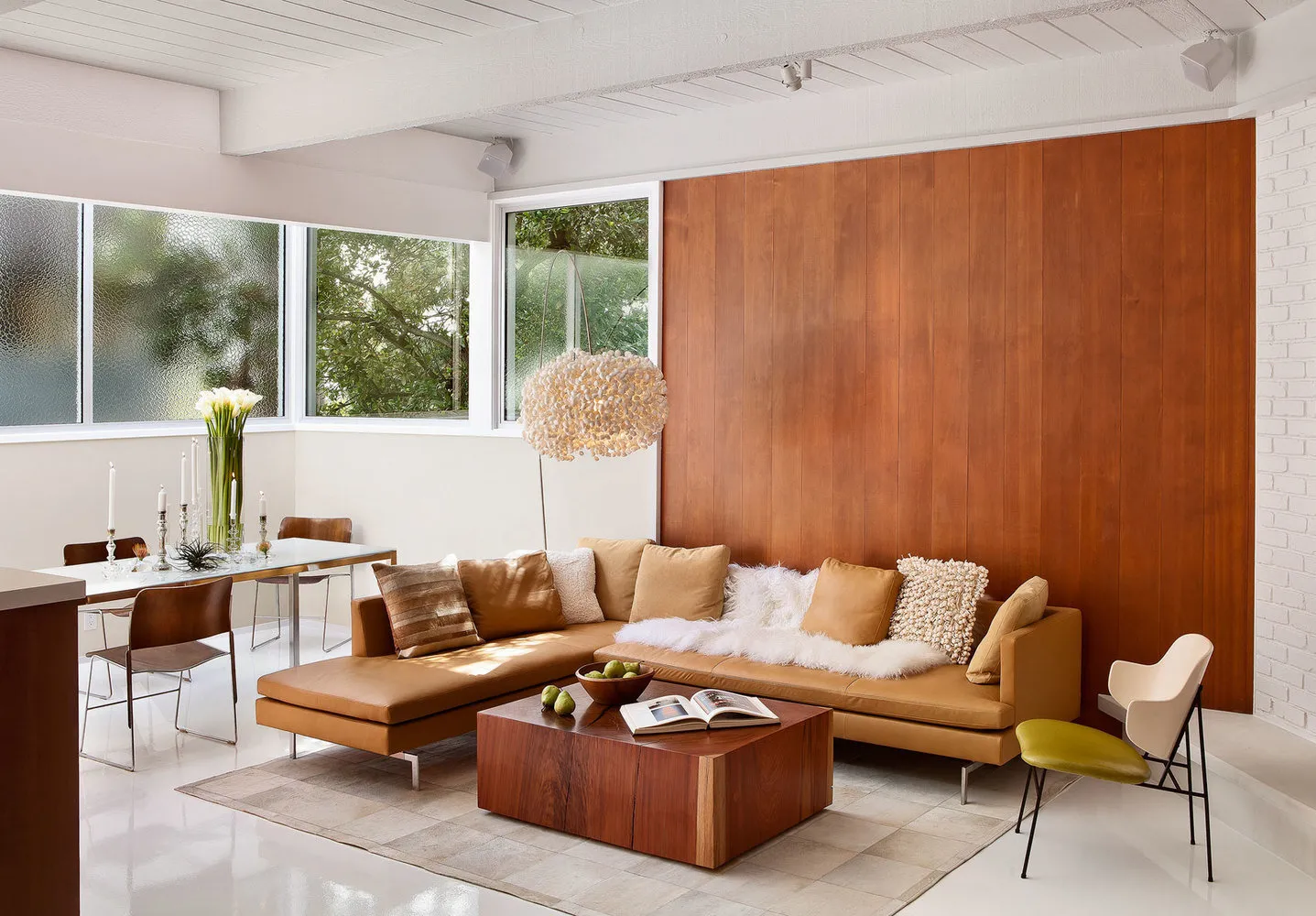 5 Rules for Decorating an Interior in Mid-Century Modern Style
5 Rules for Decorating an Interior in Mid-Century Modern Style1. The Layout Should Be Open
Open space is the basis of housing layout from this period. Large windows and minimal partitions are welcomed. For zoning, use through shelving units, lace or sliding partitions.

2. Use Natural and Affordable Materials in Finishing
In mid-century modern interiors, you can see a lot of dark brown wood: ceilings, walls, and floors are often finished with it. The effect of stylized decorative panels in the 1950s style can be achieved by wallpapering several walls with paper imitating wooden surfaces, for example, Italreflexes Asia.
However, alongside the use of natural finishing materials in the mid-century era, artificial ones were also actively created. Mid-century modern is primarily about democratization, so feel free to use cork, lacquer, plywood, laminate. Our favorite is the Haro Portland Oak laminate.
However, Venetian plaster, brick walls, exposed loft ceilings with open lighting systems, and any classicism are taboo.
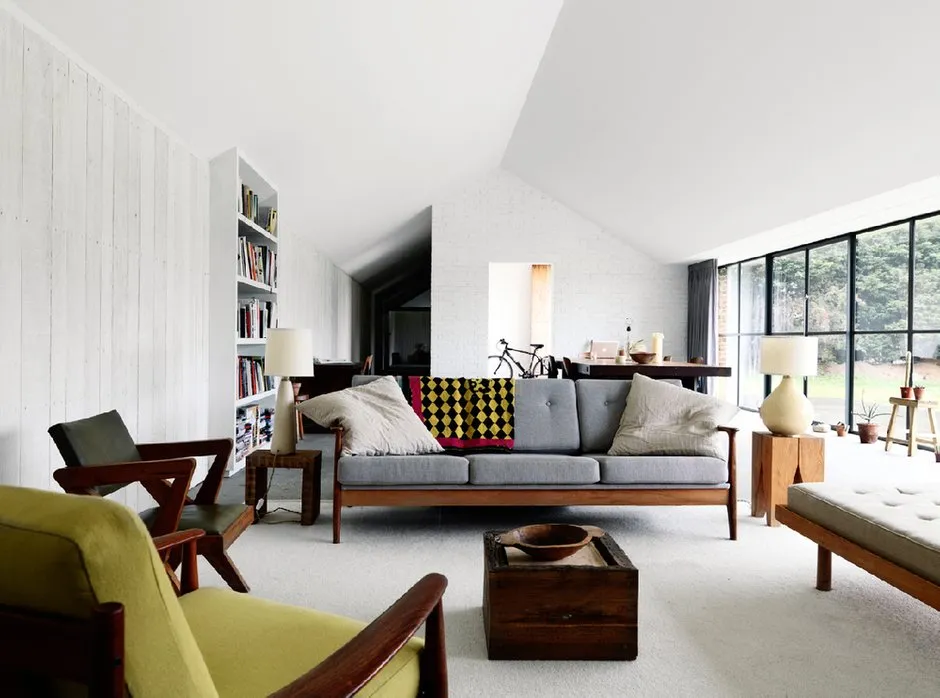
3. Furniture Should Be Simple in Shape and High Quality
Distinguishing features of furniture from the 1950s–70s include soft lines, rejection of sharp angles and flowing forms. Furniture legends created during this period include the Eames Lounge Chair by Charles and Ray Eames, chairs by Arne Jacobsen, Eero Saarinen, and Werner Panton, and the Marshmallow Sofa by George Nelson.
Arne Jacobsen's chair design is one of the symbols of the mid-century modern era and will fit into almost any interior. This chair made of American walnut has a 'slim waist' and sharp flowing curves – the business card of mid-century modern furniture. This sofa is a contender for the main role in a 1960s-style interior: it's all about the minimalist design and warm yellow upholstery. A side table with an ergonomic flowing shape – designers from the 1950s–60s would surely appreciate this! A wooden-cased clock – an unusual and fresh accent to the 1960s style. A sofa with a tiki frame and thin, spread-out legs – a proper choice in mid-century modern style. This 'cloud-like' chair seems to have been invented just for sitting and watching "Mad Men," imagining yourself on the other side of the screen. A dining table with chromed asymmetrical legs and a graphite-colored round top – our favorite. Probably the perfect balance between comfort and elegant appearance. Soft natural materials for upholstery and wooden legs will add warmth and coziness to any room.
Besides typical mid-century modern furniture items with thin, spread-out legs, plastic and plywood furniture are also actively used. These are affordable yet very pliable materials that are perfect for creating recognizable chair, table, and sofa curves.
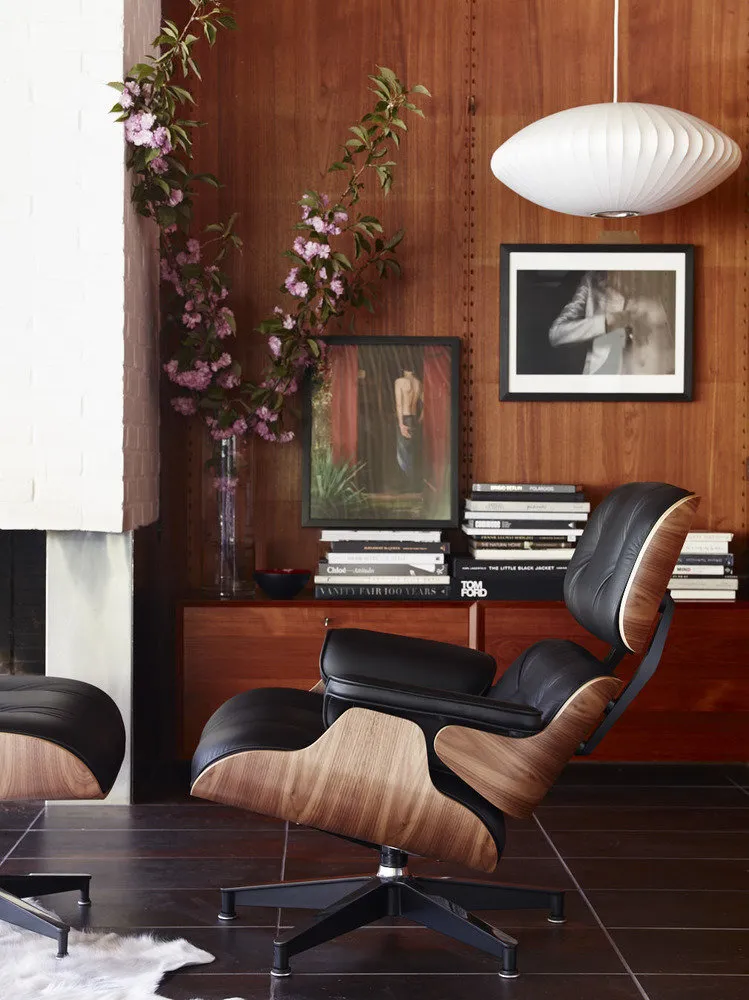 Eames Lounge Chair. Design by Charles and Ray Eames for Herman Miller
Eames Lounge Chair. Design by Charles and Ray Eames for Herman Miller Marshmallow Sofa. Design by George Nelson for Herman Miller/Vitra
Marshmallow Sofa. Design by George Nelson for Herman Miller/Vitra Ant Chair. Design by Arne Jacobsen for Novo
Ant Chair. Design by Arne Jacobsen for Novo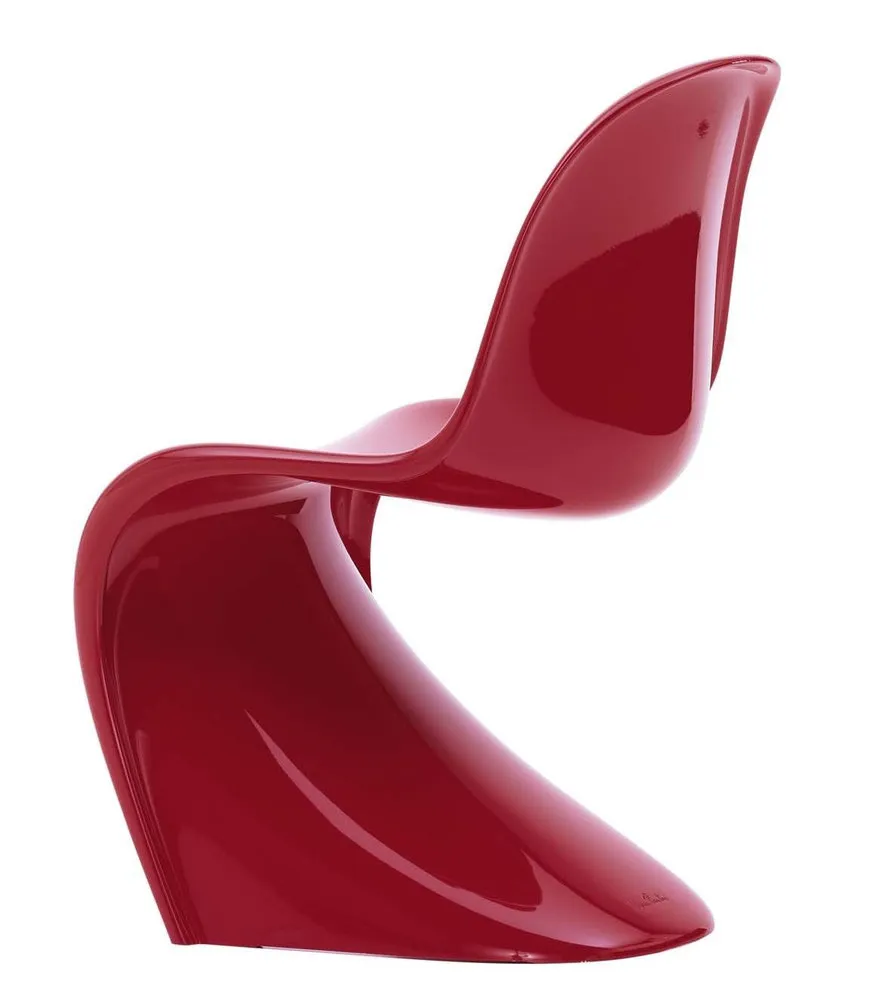 Panton Chair. Design by Werner Panton for Vitra
Panton Chair. Design by Werner Panton for Vitra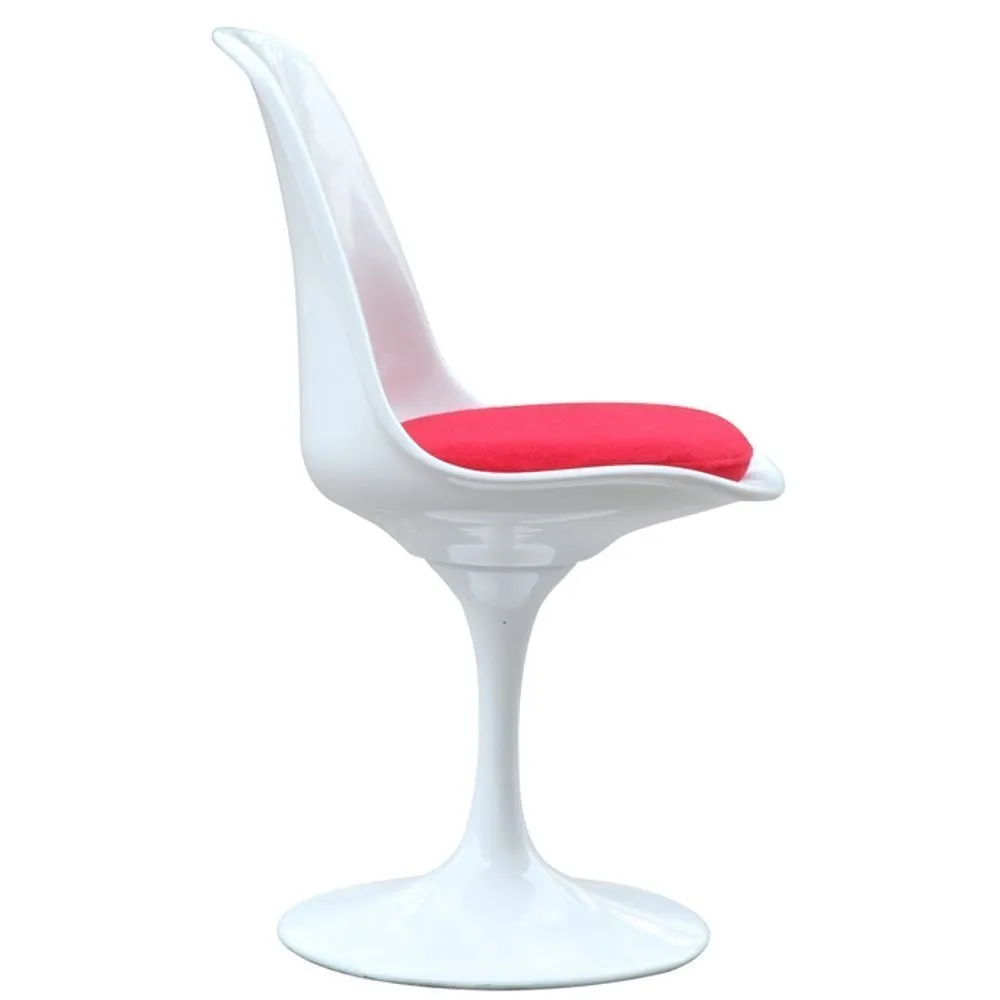 Tulip Side Chair. Design by Eero Saarinen for Knoll
Tulip Side Chair. Design by Eero Saarinen for Knoll4. Muted Color Palette + Geometric Patterns
The main color palette of mid-century modern is combinations of warm ochre tones, mustard, bottle green, and plum. Wallpaper Gentle Elegance in olive or sea buckthorn color would work well with this style.
Geometric patterns in vibrant but not overly active tones can be used as accents in the interior. These can be found at Orla Kiely, Marimekko, or Scion: these brands are big fans of 1950s–60s design.
Patterns from that time are slightly ironic, even childlike: the influence of pop art at the end of the 1950s is evident.
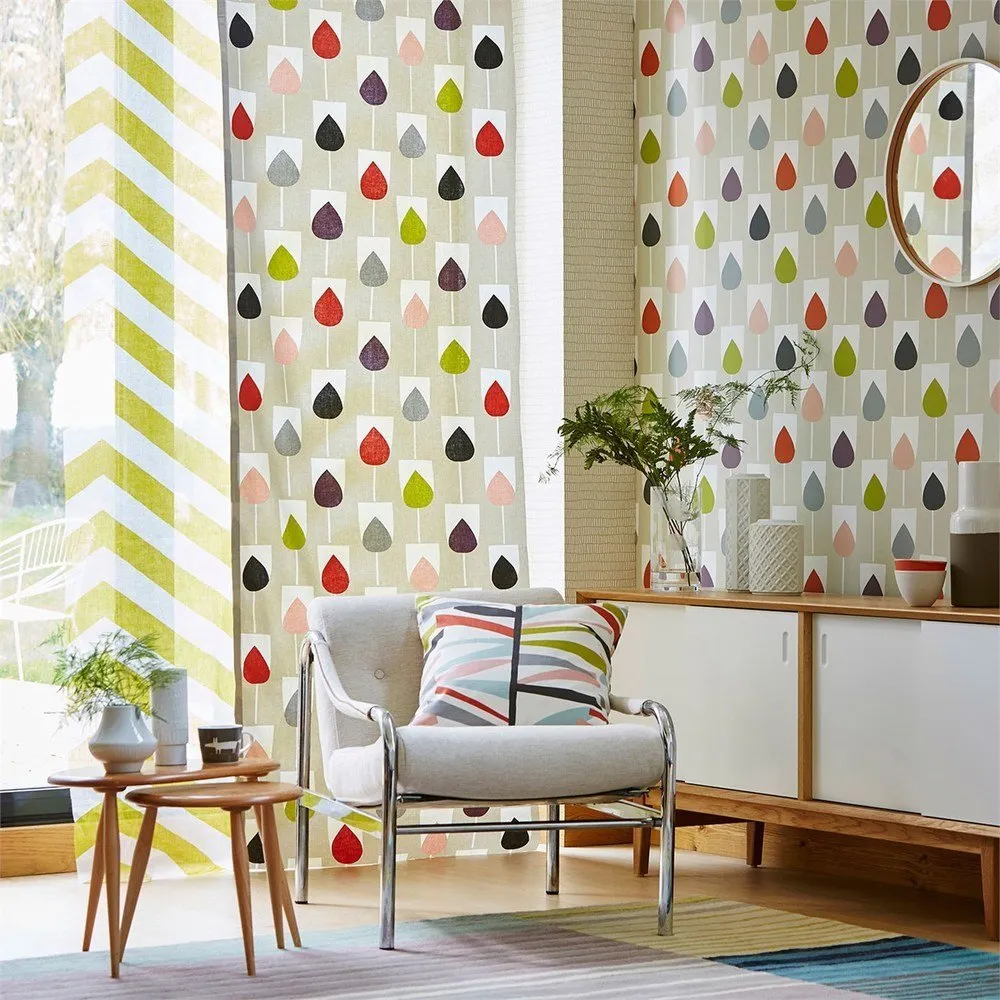
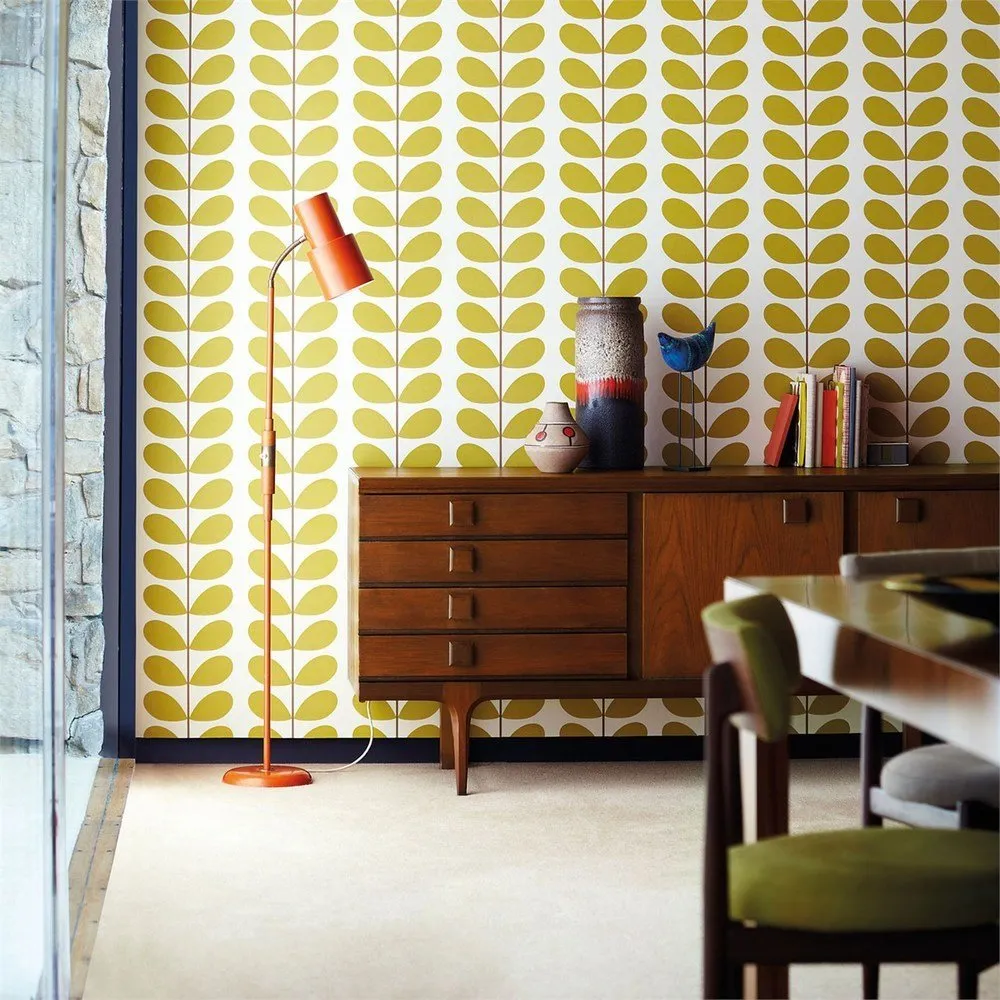
5. There Should Be Plenty of Light
The philosophy of mid-century modern was influenced by aerodynamic aesthetics. That's why many light fixtures resemble spaceships and shiny flying saucers: the Vistosi SP BIANCA chandelier is a typical example. However, simple and minimalist light fixtures in brass or chrome, like the Flos pendant light, are also popular.
In any case, designers working with light in the mid-century modern era agreed on one thing: lighting should be varied and multifunctional. This gives rise to table lamps, floor lamps, and local lighting. Notable examples of this direction include the Artichoke Pendant by Poul Henningsen and the Arco Floor Lamp by Achille and Piero Castiglioni.
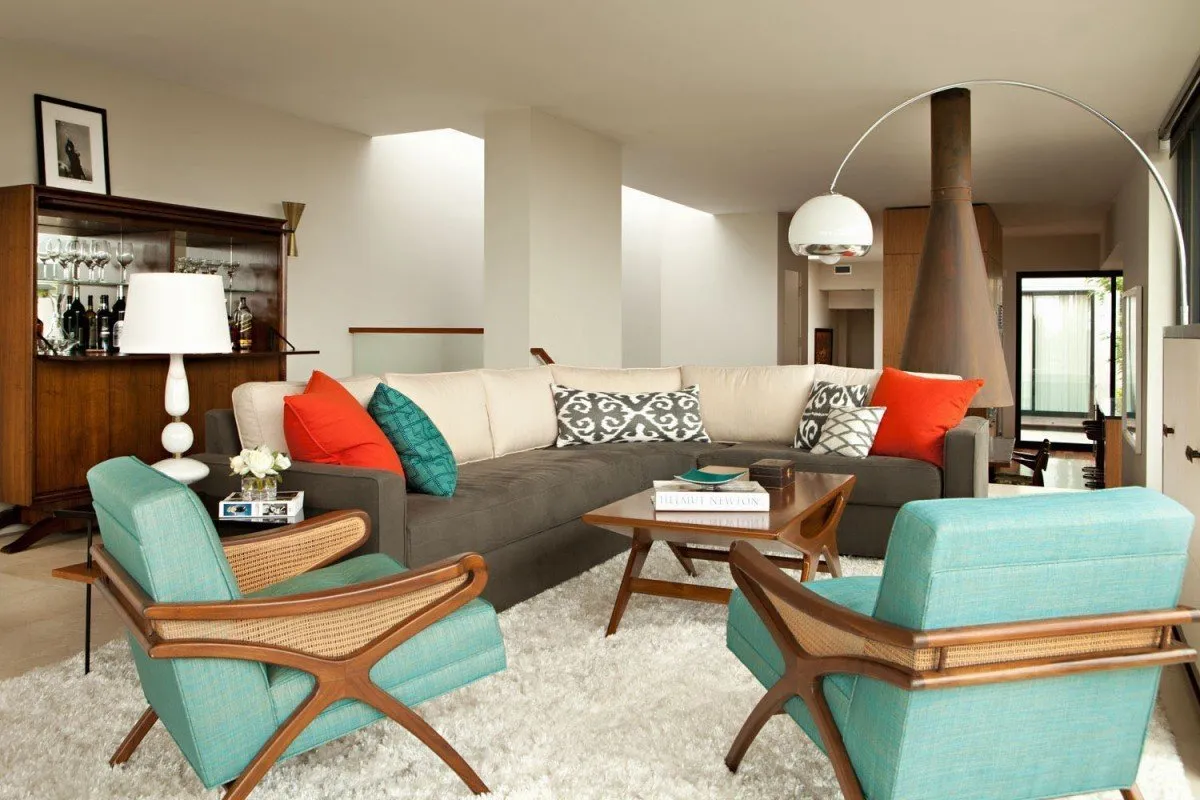 Arco Light. Design by Achille and Piero Castiglioni for Flos
Arco Light. Design by Achille and Piero Castiglioni for Flos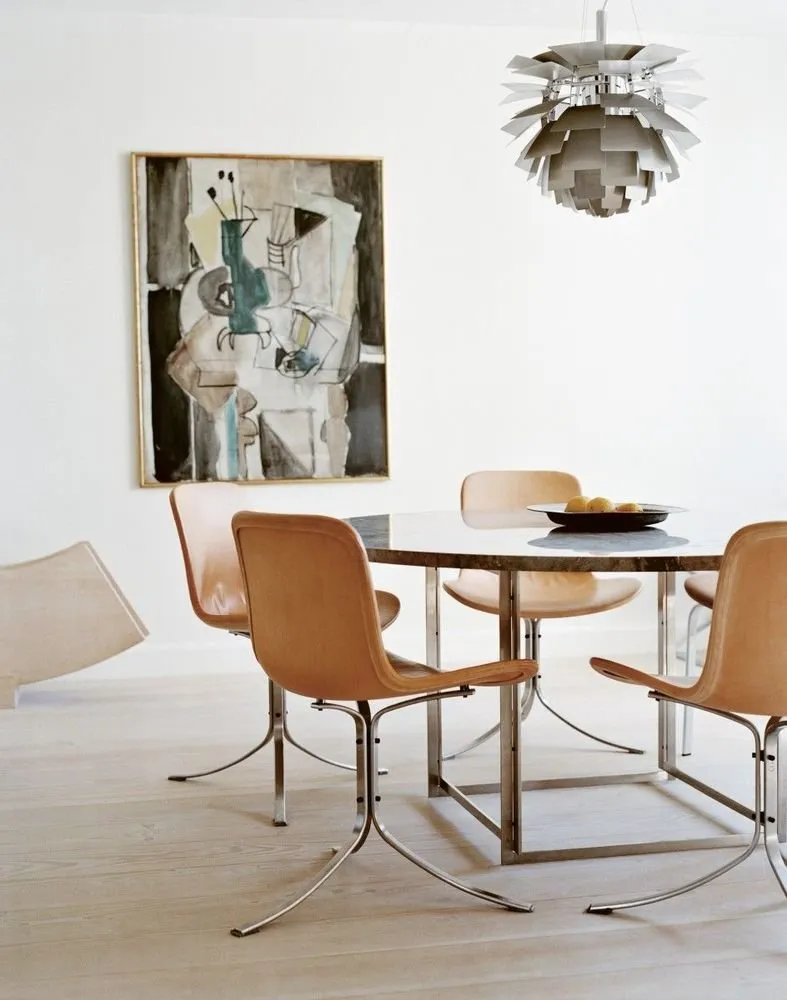 Artichoke Light. Design by Poul Henningsen for Louis Poulsen
Artichoke Light. Design by Poul Henningsen for Louis PoulsenMore articles:
 How to Place Household Appliances on the Kitchen: 8 Ideas
How to Place Household Appliances on the Kitchen: 8 Ideas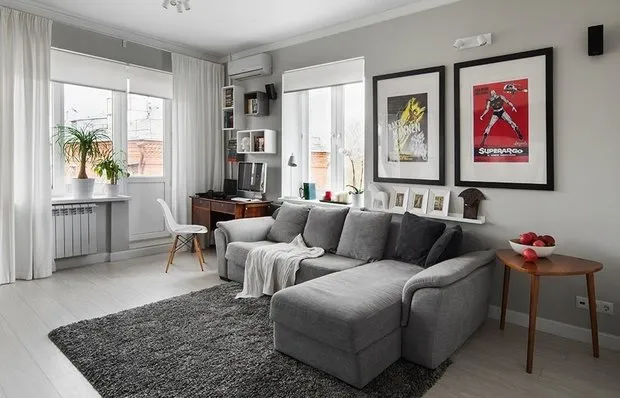 Repairing a Khrushchyovka: 11 Useful Tips
Repairing a Khrushchyovka: 11 Useful Tips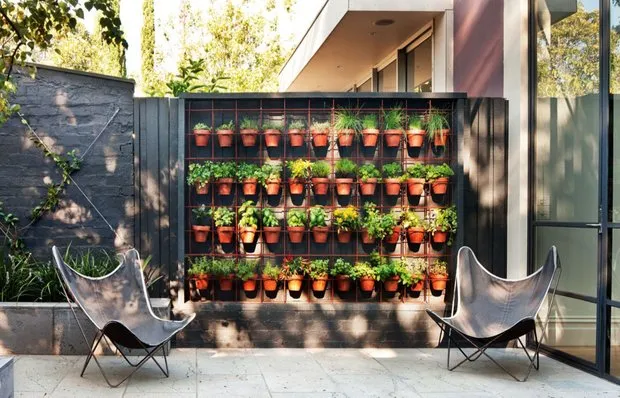 How to Beautifully Arrange Garden Beds: Tips and Ideas from Professionals
How to Beautifully Arrange Garden Beds: Tips and Ideas from Professionals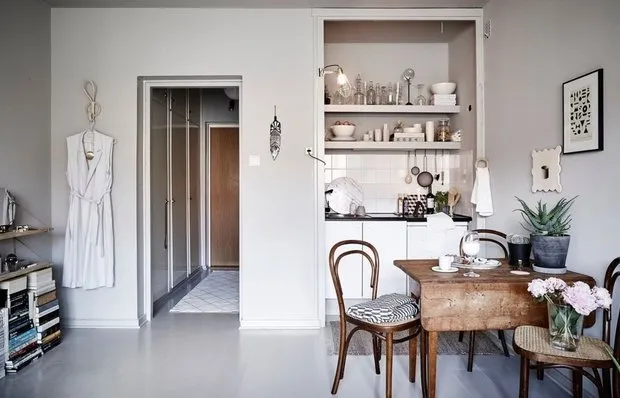 10 Myths About Designing a Small Apartment
10 Myths About Designing a Small Apartment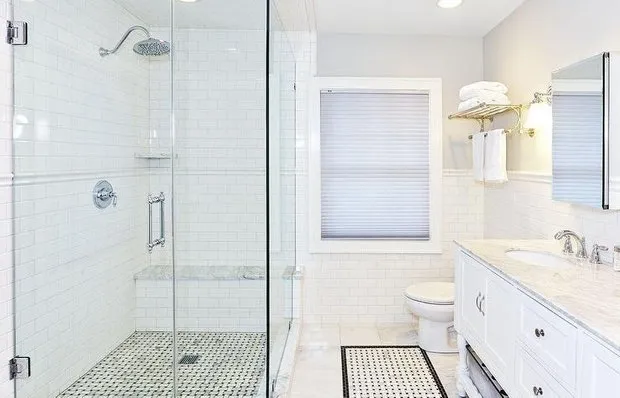 Did You Know About These 6 Bathroom Innovations?
Did You Know About These 6 Bathroom Innovations? Two-Story Apartment in Parisian Attic
Two-Story Apartment in Parisian Attic 3 convenient layouts for a square kitchen
3 convenient layouts for a square kitchen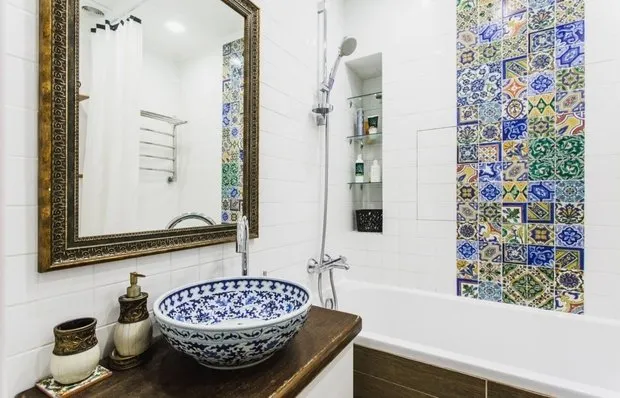 Inventions That Help Save Water in the Bathroom
Inventions That Help Save Water in the Bathroom